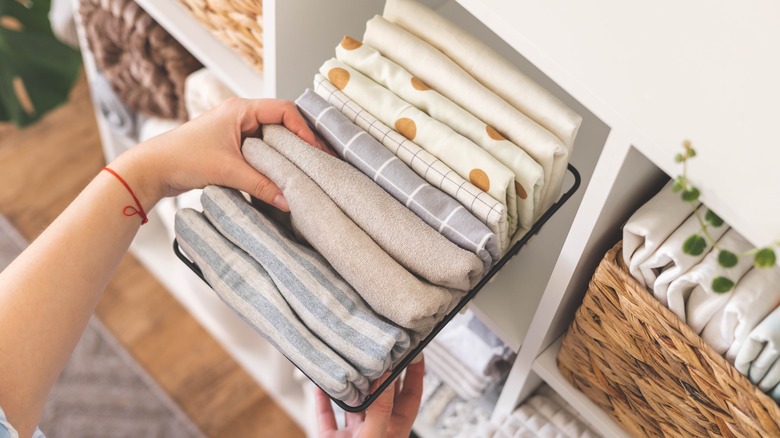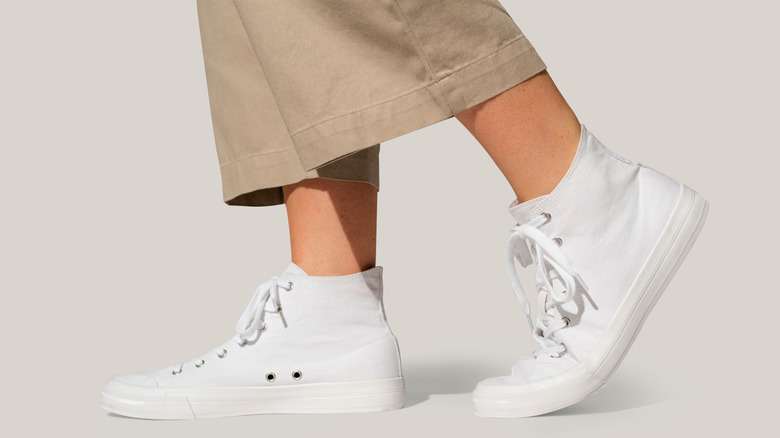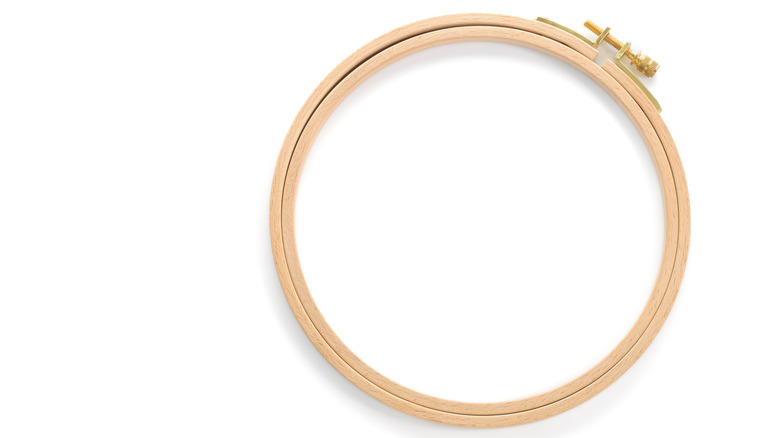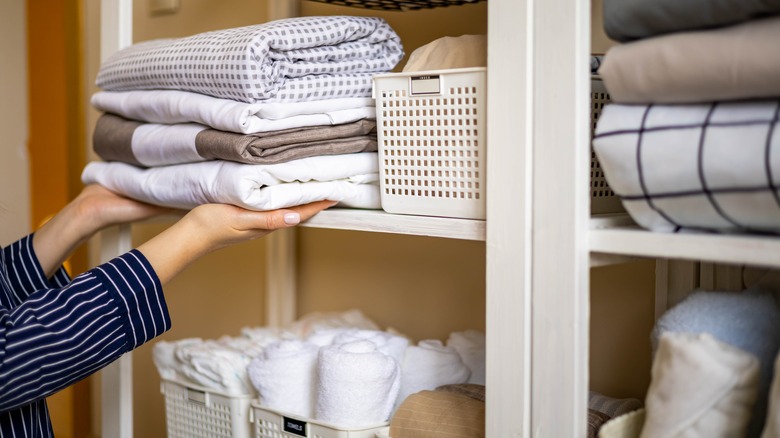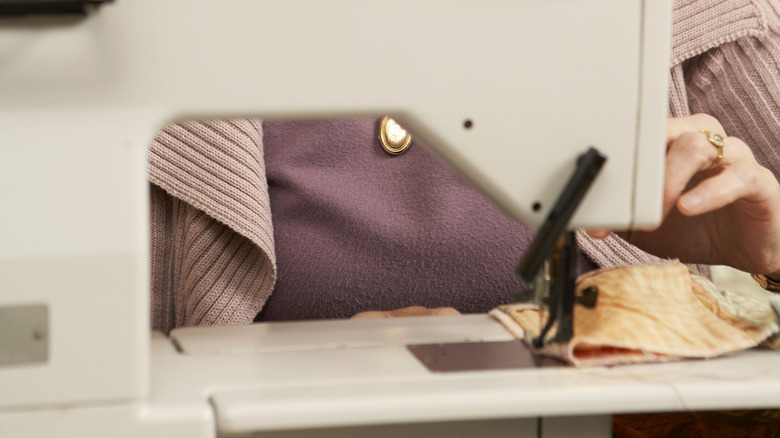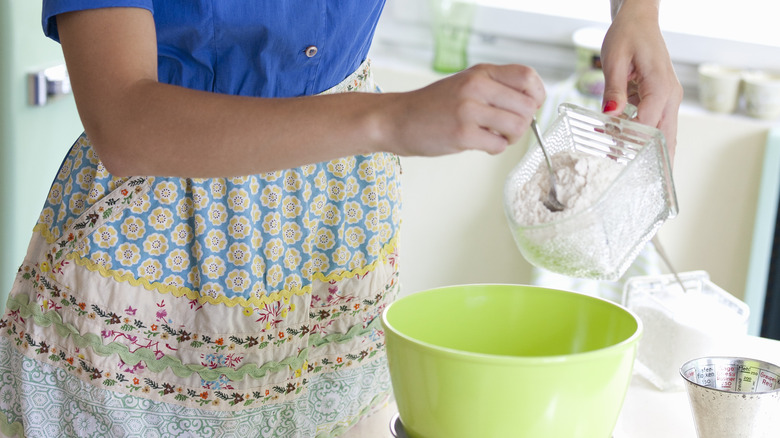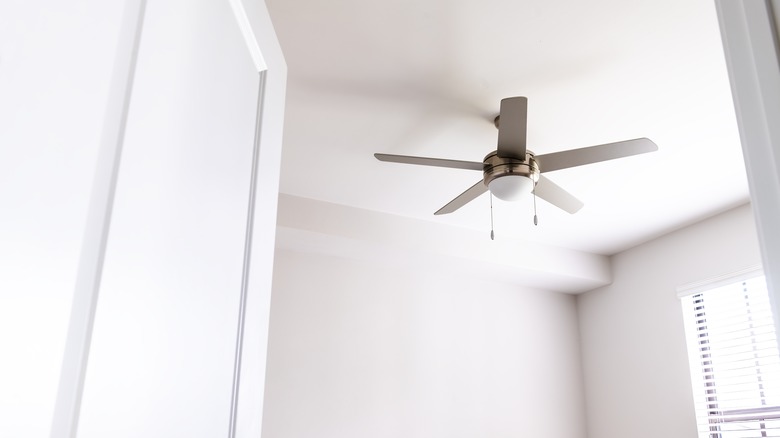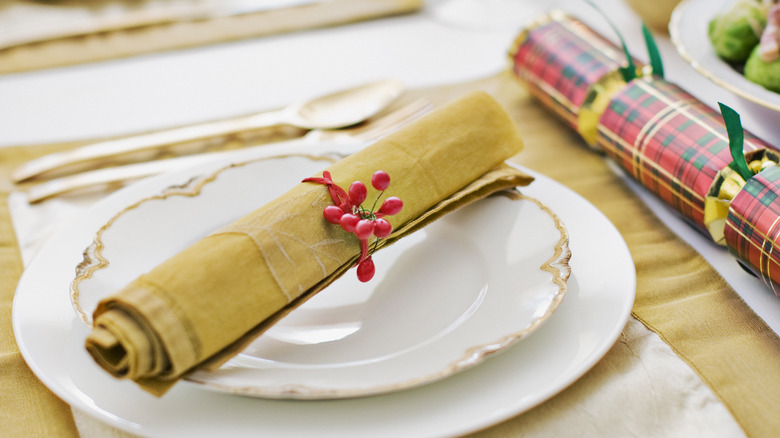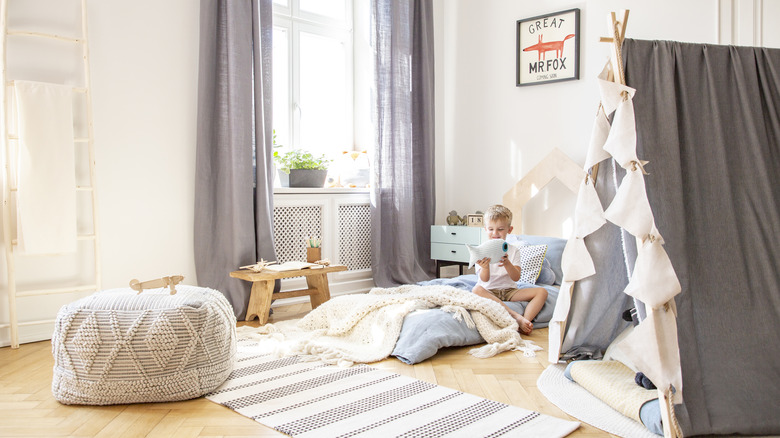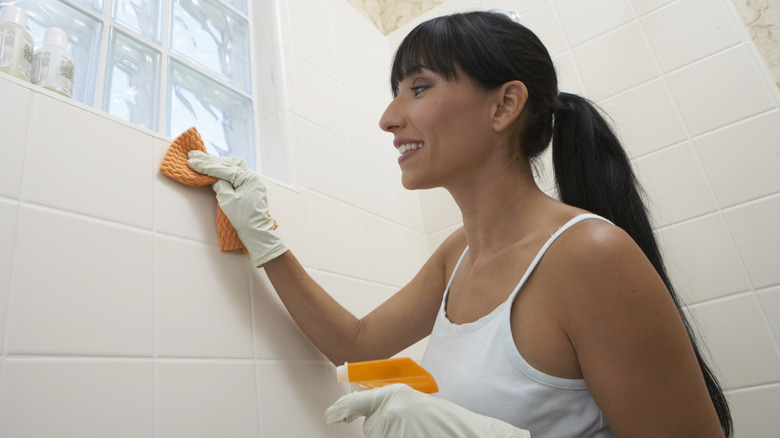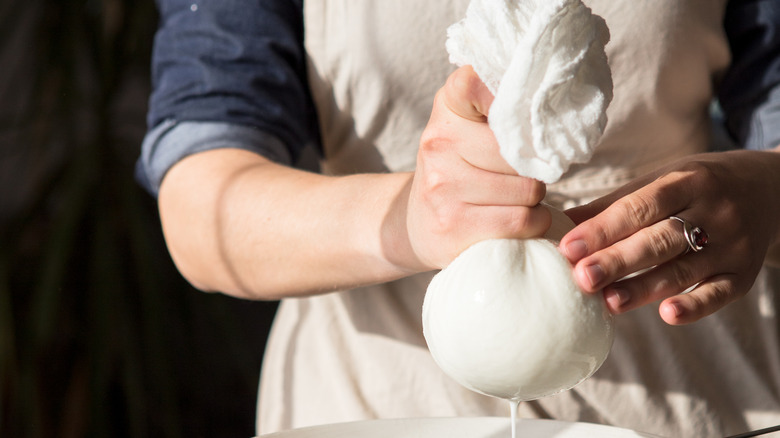Clever DIY Ways To Repurpose Unwanted Pillowcases
Many people are conscientiously trying to reuse, recycle, and repurpose household products whenever possible. When it comes to old bed linens, the lowly pillowcase stands out as a prime candidate for many repurposing projects. With a little imagination and DIY energy, you can find multiple uses for those pillowcases that you no longer want to use on your bed. When household items are discarded in landfills, they contribute to the emission of landfill gas that is composed of carbon dioxide and methane. According to the U. S. Environmental Protection Agency, methane is a greenhouse gas that contributes to global warming by trapping heat in the atmosphere. For this reason, it's important to repurpose items, such as unwanted pillowcases, whenever possible.
Most pillowcases are made from cotton, polyester, flannel, satin, silk, and Tencel fabrics. The most common design is the bag type where one end of the pillowcase is left open for inserting a bed pillow. With these attributes, an unwanted pillowcase is ideal for varied purposes. It's a natural repository for dirty laundry or items that you keep in storage. Using minimal sewing skills, you can transform a pillowcase into a tote bag or a drawstring bag. You can even turn an unwanted pillowcase into clothing if you make it into a skirt, an apron, or a child's dress. Additionally, old pillowcases come in handy for an array of cleaning chores around the house. Read on for details about these projects and more ways to repurpose unwanted pillowcases.
Make a tote bag from a pillowcase
Pillowcases come in myriad colors and prints. If you find one with particular visual appeal, you might turn it into a tote bag after you've replaced it as a part of your bedding ensemble. However, the soft fabric of a pillowcase lacks the stiffness and structure that you need for a useful tote bag. Therefore, you'll need to add interfacing and lining for stability. Additionally, your tote bag will need handles for carrying.
To begin, cut your pillowcase in half crosswise. The hemmed end will become the top of the tote bag. Turn the half pillowcase inside out and sew the bottom opening to close it. After turning the pillowcase right-side outward again, you can insert fusible fleece or fusible interfacing inside the pillowcase. Be sure the glue dots are facing toward the inside surfaces of the pillowcase's front and back panels. Iron the fleece or interfacing according to package directions to fuse it to the inside of the pillowcase. Next, you can add a lining as well as handles made from fabric or ribbon. Check out the full tutorial on See Kate Sew.
Use a pillowcase to safely wash canvas sneakers and stuffed toys
Most sneakers made from canvas, cotton, and nylon can survive a trip through the washing machine cycles if they are protected inside a pillowcase. Simply insert the shoes in the pillowcase and tie off the open end with string or cinch the pillowcase closed with a hair elastic. Before washing the sneakers, you'll want to remove the shoestrings and insoles. Brush off any mud and dry debris stuck on the shoes. When your sneakers are secured inside the pillowcase, wash them in cold water on a delicate or hand-wash cycle to avoid excessive agitation. After washing, remove the sneakers from the pillowcase and allow them to air dry overnight.
Children's stuffed toys can be laundered in the same way as fabric sneakers. Simply place the stuffed toy inside a pillowcase and tie it off. Wash on the delicate cycle with mild detergent, fabric softener, and warm or cool water. With the stuffed toy still inside the pillowcase, you can pop it into the drier at a low-heat or delicate setting.
Fashion a laundry hamper from a pillowcase and embroidery hoop
An unused pillowcase becomes a laundry hamper with a little help from a large embroidery hoop. This is a simple, no-sew, DIY hack that might just inspire your family members to pick up their dirty clothes. For each hamper, you'll need one pillowcase and one 12-inch embroidery hoop.
Each embroidery hoop has an inner ring and an outer ring. The outer ring features a small screw that allows you to loosen and tighten the ring. First, insert the inner hoop ring inside the pillowcase and align it with the seam line of the hem. Next, loosen the screw on the outer ring and position it on the outside of the pillowcase, in alignment with the inner ring. Turn the screw to tighten the outer hoop ring over the inner hoop ring, cinching the pillowcase fabric between the two rings. To finish off the look, simply fold the hemmed edge of the pillowcase over the outer embroidery hoop ring. Then, using the small, outer screw as a hook, you can hang the pillowcase laundry hamper on a wall or closet door. You'll need a nail or an adhesive hook to hang the hamper. Down Home Inspiration provides all the details for this DIY project.
Sew a child's dress from a pillowcase
Sometimes, a pillowcase fabric is so pretty that you can't bear to discard it. The good news is, you can use a pillowcase to create a lovely little sundress for a child. The open end of a pillowcase is already hemmed and finished. It becomes the hem of the dress. Measuring from the hemmed edge, you'll want to cut your pillowcase to the correct length for your child. For example, an appropriate length for a 12-month-old might be 16.25 inches. On the other hand, you would cut your pillowcase to 20.25 inches for a 4-year-old child's dress.
After cutting the pillowcase to the proper length, you'll need to cut armholes on either side of the unfinished, cut end. Create matching armholes by folding the pillowcase in half lengthwise before measuring and cutting. After hemming the two armholes, fold the top edges down approximately ½-inch and sew seams to create casings on the front and back panels. Thread a ribbon through the front casing and a separate ribbon through the back casing. Tie the ribbons on either side, creating bows that will rest on the child's shoulders. You can follow the detailed tutorial on Bumblebee Linens to make this project.
Use old pillowcases to protect items for storage and travel
Don't toss old pillowcases, even when they're worn and faded. Instead, put them to good use as coverings for stored items in closets, attics, and basements. They'll protect your shoes, boots, sweaters, purses, small luggage pieces, and other objects to keep them from collecting dust while in storage. You can even fashion a hanging garment bag from a pillowcase. Start by folding the pillowcase in half lengthwise. Then, use a pair of scissors to cut a small, triangular notch in the closed end of the pillowcase at the folded edge. Next, insert a clothes hanger through the small opening that you created. You'll be pleased to see that the pillowcase hangs straight down over your clothing to form a protective covering. For details on this easy DIY hack, see Bumblebee Linens.
If you'd like to make a drawstring bag for storing and transporting items at home or while traveling, you might start with an unwanted pillowcase. Use a sewing machine to create a casing at the open end of the pillowcase. Thread a drawstring through the casing to provide a means of closing the bag. If desired, you can cut your pillowcase in half crosswise to make two storage bags from one pillowcase. See the entire tutorial on Threading My Way.
Sew a skirt from a pillowcase
On a basic design level, a pillowcase is simply a tube of fabric that is sewn shut at one end. Open up the closed end, and you have the makings of a skirt for a small adult, teen, or child. With the side seams in place and a nicely finished, hemmed edge at the bottom, your pillowcase skirt needs only a gathered waistband.
Depending on the height of the child or small adult who will wear the skirt, you'll want to cut the pillowcase crosswise to create a tube of fabric in the right length. Measure from the waist to the knee and add 1.5 inches for a casing. After you've cut it to the right length, fold in the cut edge by ¼ inch and iron to flatten the crease. Then, make a second fold measuring 1 inch, iron it flat, and topstitch a seam to create a casing. Leave a 2-inch opening to insert a length of ¾-inch elastic with a large safety pin attached to one end. The elastic should be cut to equal the child's waist measurement plus one inch. Use the safety pin to thread the elastic through the casing. When it's all the way through, sew the elastic ends together and sew the casing closed. For detailed instructions, see Craftaholics Anonymous.
Sew a pretty apron from a pillowcase
An apron protects your clothing while you're busy in the kitchen or working on home maintenance and DIY projects. If you use an unwanted pillowcase, you have a head start on making an attractive apron with pockets. Betz White explains how you can make a cute apron using a pillowcase, thread, your sewing machine, and 2 yards of sturdy ribbon.
With the pillowcase lying flat, fold the hemmed edge 8 inches up from the bottom and top stitch it in place at ¼-inch from the folded edge. In the end, this stitched edge will become the top edge of your apron pockets. Next, turn the pillowcase over and fold it up 8 inches from the bottom, again. Stitch a straight seam around the bottom edge as well as up the sides. This will create a pocket across the width of the apron. Mark a center line, and stitch up the center to divide the pocket in two. Finally, you'll need to stitch a 60-inch length of ribbon across the top of the apron. Be sure to center the ribbon and leave the ends loose to wrap around your waist and tie in the back.
Clean your ceiling fan blades with a pillowcase
Cleaning the ceiling fan blades is one of the most dreaded chores around the house. They should be cleaned every couple of weeks or monthly. At the most, try not to let them go for more than 3 months without cleaning. Although it's tricky to get up on a ladder and clean the ceiling fan, it's an important chore. Dust collects on the blades and it can be broadcast into the air when the fan is activated. When this happens, allergens spread throughout your home and may cause allergic reactions among your home's occupants. On top of that, the dust settles on the furniture, the floor, and other horizontal surfaces.
When it's time to clean the ceiling fan blades, an old pillowcase is your best friend. Simply climb a ladder and place the pillowcase over a blade, enveloping the entire blade, all the way up to the central fan unit. Then, slide the pillowcase off the blade, pulling outward and away from the fan's center. The dust will slide off the blade and become trapped inside the pillowcase. Repeat for each blade on the fan. Then, take the pillowcase outdoors, turn it inside out, and shake out the dust. Finally, toss the pillowcase in the washer along with your other bed linens.
Make a set of dinner napkins from a pillowcase
Whether you're entertaining guests at a dinner party or serving a meal to the family, cloth napkins add an elegant vibe to the dining experience. When you replace your bedding sets, it's easy to transform unwanted pillowcases into useful dinner napkins. With a pillowcase lying flat, you have two thicknesses of identical fabric, counting the front and back panels of the pillowcase. To make your dinner napkins, you'll want to keep the two pieces of cloth together, resulting in substantial, two-ply cloth napkins.
For each napkin, measure a 19-inch by 21-inch rectangle and cut it out. Keeping the two pieces of fabric together, fold and topstitch a ¼-inch hem on two opposite sides of the rectangle. Repeat the procedure on the same sides, creating an additional ¼-inch hem. The result will be a strong, thick edging for your napkin. Next, you'll want to turn your fabric rectangle to fold and stitch a ¼-inch hem on the remaining two edges. Repeat the procedure so that all four edges are the same. You'll end up with a napkin measuring 18 inches by 20 inches. It will have a double thickness of fabric along with strongly reinforced edges on all four sides. Read more about this project at Paper & Stitch.
Pack a pillowcase in your luggage as a travel laundry bag
Did you know that you can stash a pillowcase in your suitcase to help you organize the clothing inside your luggage? When you're traveling for several days or weeks, you inevitably end up with both clean clothes and dirty laundry inside your suitcase. Naturally, you want to separate them. Here's where the pillowcase comes in handy. As you undress every night, simply toss your dirty clothes into the pillowcase. It adds no weight or bulk to the luggage. In fact, you can pack two pillowcases: one for delicates and light-color garments and one for heavier fabrics and darker colors. That way, your laundry is already separated for you to pop it into the washer when you return home.
There are a few advantages to using a pillowcase as a laundry bag. First, it can be folded very small and weighs only around 4 ounces. Secondly, the pillowcase is completely flexible and molds to any shape, fitting around the items in your packed luggage. Additionally, it makes unpacking a breeze. When you're back home, simply remove the pillowcase full of dirty clothes from your suitcase and take it straight to the laundry room. Launder the pillowcase along with your clothing items, and it's fresh and ready to go on your next trip.
Sew pillowcases together to create a large floor pillow
A large floor pillow is a fun accessory for toddlers and children. Made with unwanted pillowcases, it's a comfortable nest for napping, reading, watching TV, or enjoying quiet time. Use a large floor pillow in a child's bedroom, the playroom, or the family room, or leave one at grandma's house for overnight visits. Additionally, a floor pillow is the ideal companion for sleepovers with friends. It's easy to make a kids' floor pillow by sewing several pillowcases together and inserting bed pillows.
Start with five unwanted pillowcases. Lay them out on a flat surface, side-by-side. Be sure that the openings are all on the same side. Overlap the edges of the pillowcases by approximately ¼ inch. Then, pin the pillowcases together and topstitch straight seams to join them. This can be done with a sewing machine or sewn by hand. Next, you'll insert five bed pillows into the conjoined pillowcases, and you're finished. Check out Creativities for directions and a video tutorial.
Use old pillowcases for cleaning chores around the house
When pillowcases become so old and faded that you no longer want to use them on your bed, they still have life in them to fulfill multiple odd jobs around the house. For example, you can use a pillowcase to clean the high, hard-to-reach corners, ceiling fixtures, and crown molding in your home. Simply insert the head of a broom or long-handled brush into the pillowcase. Secure it with a rubber band or string. Spray the pillowcase with a mild, multi-purpose cleaner, or sprinkle a few drops of essential oil on it. Then, use the pillowcase-covered broom or brush to remove the dust and cobwebs from places on and near the ceiling.
Instead of buying commercially made cloths for cleaning, you can cut old pillowcases to use as rags for dusting the furniture, cleaning baseboards, polishing the silver, washing the car, and many more jobs. Cotton pillowcases work best for this purpose due to their absorbency and durability. Additionally, you can cut an old pillowcase into long strips for tying up tomato plants and other climbing or trailing species of plants in the garden. Don't use a rag cut from an old pillowcase to clean the screens on your TV and electronic devices. For this purpose, it's best to use a microfiber cloth.
Substitute an old pillowcase for cheesecloth in the kitchen
Cheesecloth is a necessary kitchen item for many recipes, including cheese and yogurt. Additionally, it's used for straining liquids and comes in handy for processes such as beer-making and wine-making. The attributes that make cheesecloth a desirable tool include the loose weave that allows liquids to strain through it as well as the ease with which you can wash and sterilize the cloth between uses. However, if you don't have cheesecloth on hand, you can grab a cotton pillowcase to stand in as a viable substitute.
You'll need to sterilize the pillowcase before using it in recipes, according to Master Class. Start with a freshly laundered pillowcase. Rinse it in warm water and soak it for 30 minutes in a mixture of ½-cup baking soda diluted in 1 gallon of water. Next, add the pillowcase to a pot of boiling water and boil it for five minutes. Finally, wring out the pillowcase and hang it to dry outdoors or in a well-ventilated indoor area. In recipes, the natural fibers and porous weave of a cotton pillowcase will act like a cheesecloth bag.
